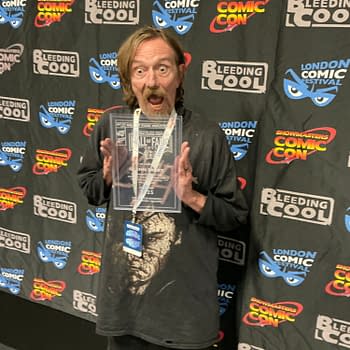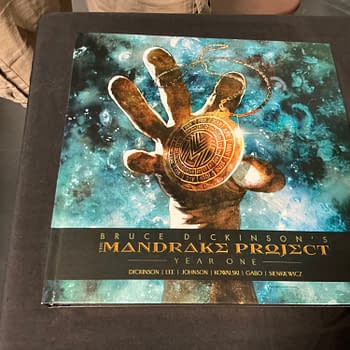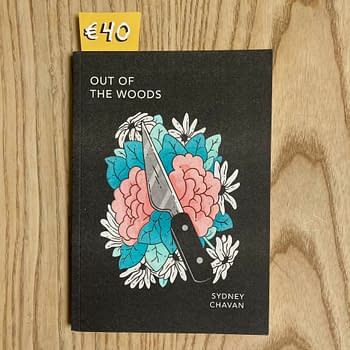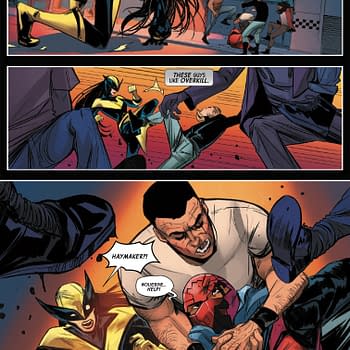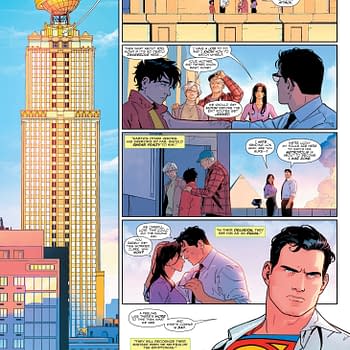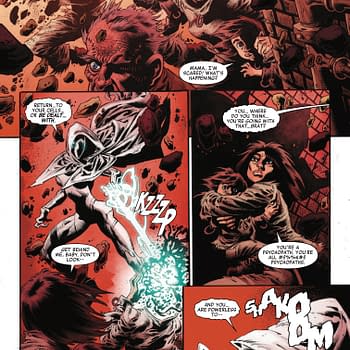Posted in: Comics | Tagged:
10 Rules For Hiring Indie Comics Artists
Caleb Palmquist writes,
My name is Caleb Palmquist, and I am one of the writers and creators of the webcomic A Small Favor. The comic utilizes a rotating roster of artists, so over the past two years we have contracted with nearly a dozen artists, colorists, and letterers to make A Small Favor a reality.
Hiring and working with artists in the indie comics world is a process that can require some patience and a little finesse. Over the past couple of years I've met a lot of artists, made a lot of new friends, and made my fair share of mistakes. To help any aspiring comic book writers looking to hire a creative team, I've compiled what I've learned into 10 helpful tips:
1. Good Art Costs Money…
This is the most important thing you need to accept right away. Art sells comics, so if you don't have good art, very few people will be interested in your story. There are plenty of talented artists ready and willing to work on your indie comic, but they won't do it for free (nor should they). Expect to pay somewhere in the range of $100-$200 per page for a fully colored and lettered comic (whether it's all done by one person or by a team). If you have to hold off for a while to save up some money, so be it.
Of course, you can find artists who are cheaper. New artists often offer low rates to get more work, but working with an untested artist also comes with its own risks. Hiring the cheapest option has the potential to cause more problems than it solves.
2. … But Negotiating Is Okay
Indie comic artists are freelancers, not a department store, so most of them are willing to come to a deal if they like your project. However, it is important to be respectful. Start by asking the artist what their page rates are. If they are out of your price range, it's okay to ask for a lower price, but if they won't go lower, it's time to walk away. Don't burn bridges – you may want to revisit that artist down the road, when you have a bigger budget. Plus, the indie comics community tends to be tight-knit. Word gets around, and if you're a jerk to someone, you may find that it is suddenly hard to find an artist who will work with you.
3. Do Your Research
Before contacting an artist, do some background research on them. Have they done work-for-hire before? Talk to other people who have worked with them and get their impressions. Are they fast? Trustworthy? Easy to work with? If you can spot any red flags before you start working with someone, you'll save yourself a lot of time and headache. Having to find a new artist partway through your project is the worst. Your chances of running into problems increase if you decide to hire a green artist offering a low rate. You might get lucky and find someone amazing, but you should tread carefully if they don't have a track record.
4. Perfect Your Pitch
Start your pitch by mentioning that this will be a paid gig – if money isn't mentioned many artists will assume you are asking for free work and they will simply ignore your message. Mention that it is paid – maybe even in the subject line of your email – and ask them to name their price before you attempt to negotiate.
That said, when you hire an artist you're entering into a partnership with them. Yes, you're paying them, but they also have an interest in making sure their artwork is attached to quality projects. Write up a polished pitch and run it through a spellcheck or have a friend look it over. If you don't have any published work yet, your artist is going to want some evidence that you actually know how to write. Let them know what the project is about and tell them a little about yourself. And while you're at it…
5. Show Some Interest
Pretty much every freelance comic artist has their own comic book projects out in the world. Read their work and let them know what you think. Chances are you'll discover a new favorite comic this way. Showing an artist that you have read and appreciated their work will make them more likely to work with you. Of course, showing interest is just the beginning…
6. Be A Friend
Once you start working with an artist, spend some time getting to know them. Like any good partnership, it's essential to find some common ground and get comfortable throwing ideas back and forth. Just don't be creepy, you know?
7. Sign A Contract
Before you start working with an artist, you should both sign a contract detailing payment, deadlines, intellectual rights, and so on. I'm not a lawyer, so I hired one to write a contract for me. That is an entirely different discussion, but if you're serious about creating a comic book, it is worth the expense. In 95% of cases nothing will go wrong and a contract won't need to be invoked, but it is still worth doing. The contract protects both you and the artist – so make sure you live up to your end and pay what's owed.
8. Pay Your Artists. Seriously.
Being a freelancer is tough. Work can be erratic and freelancers are constantly getting screwed over. Any seasoned freelancer has a healthy amount of distrust built up, so they are going to want assurances that they will be paid.
Of course, as the person shelling out all the cash, you have reasons to be distrustful as well. As a general rule of thumb, with an artist I've never worked with before I pay 50% up front (after the contract has been signed) and 50% when the work is completed. If I have worked with the artist before, I pay 100% up front. This goes back to negotiation – I would recommend asking to pay only 50% up front, but if the artist wants 100% and won't budge, either accept it or walk away and find someone else. There are other payment models too – like making weekly or monthly payments based on pages completed – but I can't speak to how well they work. Talk to your artist and find a solution that works best for both of you.
9. Participate In The Community
The best way to find new artists is to participate in the indie comics community. Join the Facebook groups, follow creators you like on Instagram and Twitter, and participate in discussions about indie comics and the process of making comics. Sometimes artists openly advertise their services on public Facebook groups and you can usually get good suggestions for artists from people who frequent them. The more comic creators you know, the bigger your network will grow. If you're open and friendly and you have a good pitch, you'll find the right artist.
10. Don't Be Afraid To Ask
Sometimes I'll find a comic book artist who is so awesome I'll think there's no way they'd be interested in drawing for my comic, but I ask anyway. Usually I'm right. I'll get a lot of responses along the lines of "I'm actually really busy with my own projects right now, but thanks for thinking of me!" Still, every once in awhile I get someone who is interested. I have managed to get some of my favorite indie comics artists to draw for my comic, and all I had to do was ask. If I had just assumed they were too busy or too important, I wouldn't have their amazing art in my comic now. It never hurts to reach out.
In Conclusion
I hope that some of these tips help you find and work with a team of artists for your own comic book project. If you're interested in checking out my comic A Small Favor, it's on Kickstarter right now. You can check it out here: https://www.kickstarter.com/projects/918197022/a-small-favor-an-epic-sci-fi-comic
If you have any questions or just want to chat about comics, feel free to contact me.







